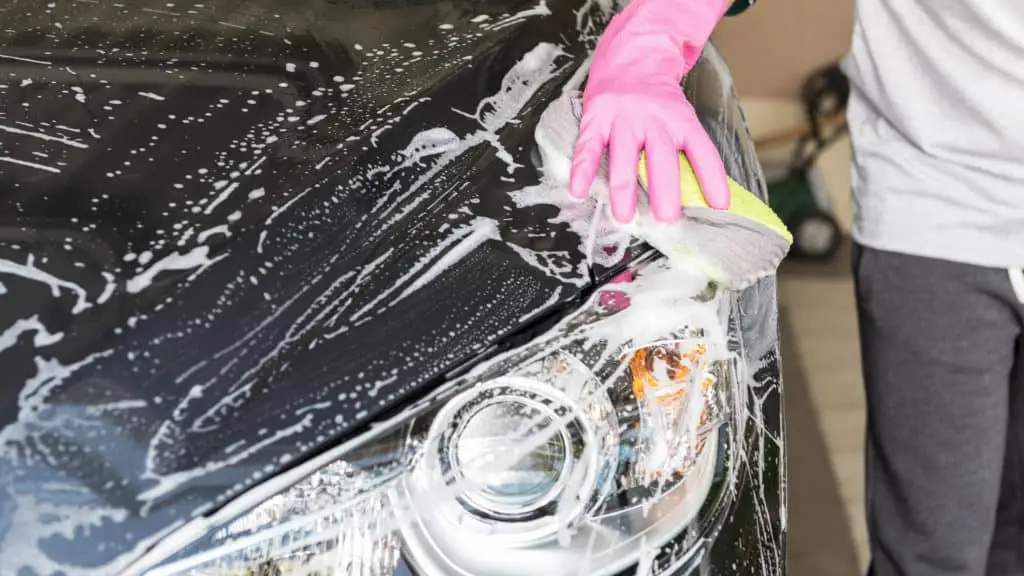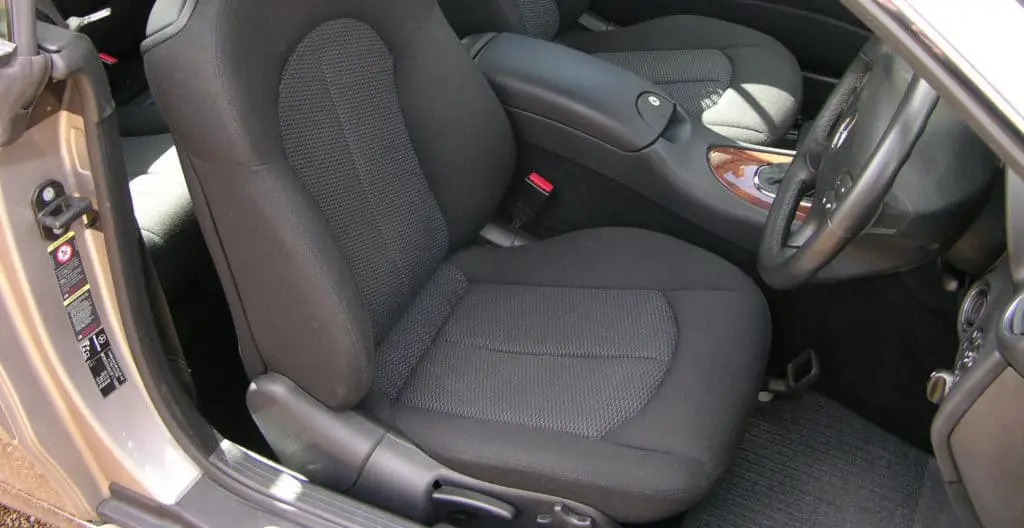Last Updated on March 19, 2025 by Nate Schnell
If you’re like most car owners, your car’s seat covers probably take quite a beating. Between accidental spills, muddy shoes, pet fur, and everyday dirt, car seat covers can quickly go from clean to grimy. Regular cleaning not only improves the appearance of your car’s interior but also contributes to healthier conditions by reducing allergens, bacteria, and odors trapped in fabric. As someone who’s spent over a decade in car care and detailing, I’ve seen firsthand how regularly washing your car seat covers can transform your driving experience. In this guide, I’ll share proven methods to wash car seat covers by hand and in the washing machine, along with practical tips to maintain cleanliness over time without causing damage.
Before You Begin: Check Manufacturer Instructions
Before we jump into the cleaning steps, there’s an essential first step—always check the manufacturer’s instructions. Car seat materials vary significantly, from soft fabric to synthetic blends, and some materials might have special care instructions. Ignoring these guidelines might void your warranty or, worse, cause damage to your seat covers.
Washing Cloth Car Seat Covers in the Washing Machine
Most cloth car seat covers can safely be machine washed. However, always confirm with the manufacturer’s care label first. Follow these steps for the best results:
Remove and Vacuum Seat Covers
Start by removing the seat covers from your car seats. Be careful while removing them to avoid shaking loose debris onto your car’s carpet. Next, thoroughly vacuum each seat cover to remove dirt, debris, pet hair, or loose crumbs. This is an essential first step because debris left behind can become further embedded during the wash cycle.
Pre-Treat Heavy Stains
If your covers have stubborn stains—like coffee, juice spills, or food—pre-treat them using a mixture of gentle detergent, warm water, and baking soda. Gently rub this solution onto the stain with a soft brush or cloth. Allow it to sit for 10-15 minutes before washing. Baking soda helps neutralize odors and breaks down stains, making them easier to remove.
Machine Wash on Gentle Cycle
Place the seat covers in the washing machine, setting the machine to a gentle, cold-water cycle. Hot water can shrink or fade fabric, so stick to cold. Add mild detergent, such as a fragrance-free laundry soap or gentle car seat fabric cleaner. Avoid harsh detergents or bleach, as they can weaken the fabric fibers or fade the colors.
Air Dry or Tumble Dry on Low
Drying your seat covers correctly is vital. Air drying outdoors or indoors away from direct sunlight is best, as UV rays can fade colors. If you must use a dryer, select the lowest heat setting and use the delicate cycle. High heat can shrink or damage the fabric.
How to Hand Wash Cloth Car Seat Covers
Hand washing is gentler on delicate car seat covers and is highly recommended if you want to extend their lifespan. Follow these simple steps:
Vacuum Covers Thoroughly
Start by vacuuming both sides of the seat covers to remove loose dirt and debris. This prevents scratching the fabric when cleaning.
Prepare a Gentle Cleaning Solution
Mix warm water with a mild detergent or baby shampoo and baking soda in a bucket. Baking soda helps neutralize odors and break up stains without harsh chemicals.
Hand-Wash Gently
Dip a soft cloth or sponge into the cleaning solution, wring it out until damp (not dripping), and gently scrub the covers. Focus on stained areas first, using circular motions. Avoid soaking the fabric entirely, as overly wet seat covers take longer to dry and can promote mold growth.
Rinse With Cold Water
Once you’ve finished cleaning, rinse thoroughly with cold water to remove all soap residue. Leaving soap behind can cause discoloration or stiffness.
Allow Covers to Air Dry
Lay the seat covers flat or hang them to dry in a shaded area away from direct sunlight. Direct sunlight can fade colors and weaken fabric fibers over time.
How to Clean Baby and Child Car Seat Covers
Children’s car seats tend to accumulate dirt, spills, crumbs, and odors quicker than standard seat covers. The process is similar to regular seat covers but includes a few extra precautions:
Check Manufacturer’s Guidelines First
Child car seats often come with strict cleaning guidelines due to safety standards. Consult the instruction manual before you begin.
Remove Seat Covers and Harnesses
Carefully detach seat covers and remove harness straps, following manufacturer guidelines. Harnesses and straps usually need hand washing, as harsh detergents or rough washing can weaken their strength.
Machine Wash Covers (If Allowed)
If the manual allows, use the gentle cycle with mild detergent and cold water. Alternatively, hand wash with gentle soap and baking soda.
Hand Wash Harness Straps and Buckles
Clean harnesses separately in warm water mixed with mild soap or baby shampoo. Scrub gently with a soft toothbrush and rinse thoroughly with cold water. Never machine-wash harness straps, as this can compromise their safety.
Dry Completely Before Reinstallation
Always air-dry seat covers and harnesses thoroughly before reinstalling them. Damp materials can breed mold or bacteria, causing unpleasant odors or hygiene issues.
How to Remove Tough Stains from Car Seat Covers
When dealing with particularly stubborn stains, consider these helpful solutions:
- Baking Soda: Effective at lifting stubborn stains and removing unpleasant odors. Mix baking soda with water to form a paste, apply it to the stain, leave for 30 minutes, and gently scrub away with a soft brush.
- Vinegar Spot Cleaning: White vinegar diluted with water can help lift stains. However, avoid vinegar on infant car seats, as the strong smell can be unpleasant and possibly irritating for your child.
- Commercial Upholstery Cleaners: Specialized car seat cleaners or upholstery cleaners are effective for heavy or stubborn stains. Always follow the directions provided to prevent fabric damage.
Tips for Regular Maintenance of Car Seat Covers
To keep your seat covers in great shape, consider the following practical tips:
- Regular Maintenance: Aim to wash cloth car seat covers every month or two, depending on use. Frequent cleaning helps prevent the buildup of dirt and stubborn stains.
- Spot Cleaning: Address spills immediately. Keep a car upholstery cleaner or mild soap mixture handy for quick spot-cleaning.
- Use Seat Protectors: For families with young children or pets, waterproof seat protectors help minimize damage and make cleanup much simpler.
- Avoid Direct Sunlight: Sunlight can fade and weaken fabric fibers over time. Store seat covers away from direct sunlight when drying or not in use.
Common Questions About Washing Car Seat Covers
Can You Dry Car Seat Covers in a Dryer?
Check your manufacturer’s guidelines first. Most seat covers are safest when air-dried. If you use a dryer, always select a gentle cycle at low heat.
How Do I Remove Water Stains from Car Seats?
Vacuum first, then gently apply a car upholstery cleaner or mild soap solution. Scrub lightly in circular motions, rinse with cold water, and allow it to dry naturally. Repeat if necessary.
Can You Use Dish Soap for Car Seat Covers?
Yes, dish soap is safe and effective for spot-cleaning seat covers. Always rinse thoroughly afterward, as leftover soap can leave marks or residue.
How to Remove Tough Odors from Car Seat Covers?
Sprinkle baking soda on your seat covers, let sit overnight, then vacuum thoroughly. Baking soda absorbs odors without harming fabrics.
Final Thoughts on Washing Car Seat Covers
Regular cleaning of car seat covers makes your driving environment cleaner, safer, and more pleasant. By following these straightforward methods—either machine washing or gentle hand washing—you can easily maintain your car’s interior. Remember to always check your car seat manufacturer’s instructions first, and choose gentle cleaning products to maintain fabric integrity.
Taking just a bit of extra time to care for your car seat covers will ensure they look good, smell fresh, and last longer. Not only will your car interior look better, but you’ll feel better knowing you’re riding in a clean and healthy space.



